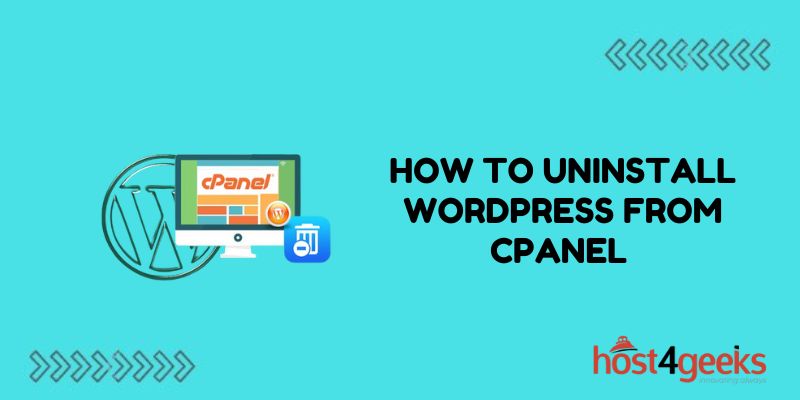Removing a WordPress site from your web host isn’t always a straightforward process. When your WordPress installation is integrated into cPanel, you can’t just delete files manually or it could cause issues. To properly uninstall WordPress from cPanel, you’ll need to fully erase your website’s files and database from your hosting account.
Proper WordPress deletion requires carefully backing up your site, accessing hidden cPanel tools, and clearing out all remnants so nothing interferes with a fresh install later on. While it may sound complicated, we’ll show you exactly how to remove your WordPress site from a cPanel host in just a few simple steps. Follow along as we outline the often confusing process of complete WordPress deletion to avoid future problems reinstalling on the same account down the road.
Back-Up Your Website Files and Database
Before deleting your WordPress site, it’s highly recommended to back up your website files and MySQL database. This will allow you to migrate your content to a new host or reinstall WordPress if needed. Here’s how to download a full website backup:
- Log in to cPanel and go to the “Backup” section
- Click “Backup Wizard”
- Choose to backup “Entire Site”
- Select all domains/subdomains to back up
- Choose a backup destination like your computer or cloud storage
- Click “Start Backup” to create the ZIP file
You should also export your WordPress database using phpMyAdmin or the cPanel backup tools. This SQL file contains all your site data.
Delete Website Files from the Server
With your WordPress files and database backed up, you can now delete your site’s files from the server. Here are the steps:
Access File Manager in cPanel
Log in to cPanel and click “File Manager” under the Files section. This will open a file directory where all your account’s files are stored.
Navigate to Public_html Folder
Inside File Manager, go into the “public_html” folder. This is the web-accessible folder where your WordPress site files should be located.
Select and Delete All Website Files/Folders
Choose all files and folders associated with your WordPress site and click “Delete” to remove them from the server. The site data has been deleted but the MySQL database still exists.
Remove Database from phpMyAdmin
To fully erase your WordPress site for good, you’ll also need to delete the MySQL database storing all your site data, including posts/pages, settings, users, etc. Here’s how to do it:
Go to phpMyAdmin in cPanel
Log in to cPanel and navigate to the “Databases” section. Click on “phpMyAdmin” to access your MySQL databases.
Select Your Site’s Database
On the left sidebar in phpMyAdmin, find the database assigned to your WordPress install. It may be prefixed with your cPanel account’s username.
Choose Operations then Delete Database
With your WP database selected, click “Operations” at the top then choose “Delete database” to permanently erase all tables and data.
Check for Any Remaining Files
After removing your site’s files and database, double check the server for any leftover WordPress folders. Sometimes leftover .htaccess rules or config files can cause errors if you install WordPress fresh. Make sure everything’s deleted.
And that’s it! With your site’s public files deleted and the database removed from the server, WordPress should now be fully uninstalled from cPanel. Just the basic cPanel files and folders will remain after.
Conclusion
Uninstalling WordPress the proper way does require a few more steps than just deleting some random files. By fully removing all website files and clearing out the MySQL database from your host, you can securely delete your WordPress site from a cPanel account when needed.
Just be absolutely sure to back up your WordPress content before deletion! Having a complete website and database archive makes it easy to migrate your site or revive it on a new host later on if ever change your mind after an uninstall.
I hope this complete cPanel tutorial has you prepared to fully remove WordPress. Let me know in the comments if you have any other questions!

